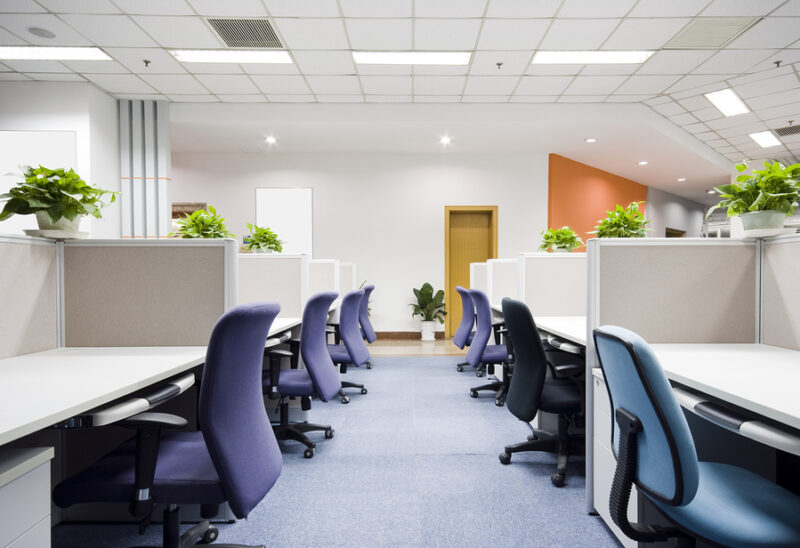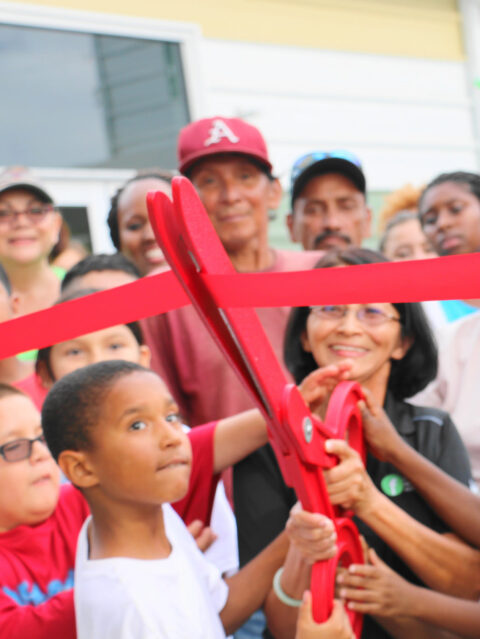Every office relocation, renovation and closure generates no-longer-needed furniture and equipment — the extra chairs, desks, cabinets, supplies and electronics sitting in your storage space right now. So what do you do with it?
What are your options and which ones suit your budget, timeline and company?
As experienced facilities and procurement professionals know well, redistributing office furniture and equipment isn’t always as simple as it sounds, especially when you consider the financial and environmental risks of a mismanaged job. With its own unique set of challenges and distractions, what is often a minor step in a larger workplace transition can quickly become a major setback.
When it comes to office surplus, the reality is that there aren’t many simple, sustainable options.
To help your company get more from its office surplus, we’ve outlined six essential steps to managing a large inventory and to supporting a more circular workplace. Each step will help you identify problems before they happen, minimize financial and environmental liabilities, and boost your chances of getting a measurable return for your business.
With the right plan and project manager, surplus office furniture can start to look less like a problem and more like an opportunity.
Step 1: Create an office furniture inventory
A thorough inventory is a must. No matter which solution you choose, your vendors will want to know what the project entails. Clear information will also save you headaches by minimizing scope changes and miscommunication down the road. If you don’t have one already, it’s time to see exactly what you have and inform the entire project.
Basic Inventory Process
- Standardize an office inventory document – a spreadsheet is a good start.
- Appoint a single person and time slot to fill out the form.
- Note the item types, brand names, age, condition, dimensions and location.
- Compare your inventory to other documents from procurement or facilities.
A proper inventory will also help you understand the item-by-item value of your surplus if you’re looking to sell office furniture or recycle it. This is critical. Coming up with a comprehensive disposition is impossible without it.
For instance, Aeron office chairs tend to retain their market value. How many do you have and in what condition? A miscount here could mean dollars lost. Similarly, filing cabinets can generate returns from their metal content. If you’re looking to effectively recycle office furniture, knowing how many you have and of what size will ensure your local metal recycler gives you what you’re owed.
Your inventory should also help identify which items are actually garbage. These are the broken chairs, desks or components that cannot be reused, refurbished or recycled. Although this is a very small percentage of the average office inventory, it’s important to identify them so they can be properly separated from reusable items before vendors factor them in.
Step 2: Understand the project goals (and opportunities)
Once you understand what you’re working with, what do you and your team want from the project?
The most common answer is, of course, a financial return. We all want to get cash back from old assets (which is certainly possible with the right inventory and buyers). The most telling way to measure the success of any business initiative is by money saved or money gained, and rightfully so. Return on investment (ROI) is a key indicator across all business processes, including asset management.
The next priority is operational — put another way, a pain-free removal. Furniture removal is always one step in a larger project; if it’s delayed or disrupted so are the other components. The key here is knowing the project scope inside out and working with a reliable logistics provider. Whether it’s poor scheduling, a rogue vendor or on-site safety issues, no one wants to be the lead on a project gone wrong. Properly managing the operations equals properly managing the costs.
But what else matters to your organization?
Few project managers take the time to consider how the project can benefit other departments, initiatives and stakeholders. If paying to remove office furniture could also complement other projects, each dollar spent on the project returns more to the company.
For instance, your company might be very active in the local community — do your counterparts in sustainability or communications know the company has a large surplus to get rid of? Donating surplus furniture can be done tactically to engage community partners without directing additional capital towards Corporate Social Responsibility (CSR) or ESG programs. Positive stories can roll off the tail end of the project to the delight of your colleagues in marketing, communications or public relations and to the benefit of your company’s reputation.
Companies with waste diversion mandates can also capture value by aiming to reuse and recycle as much office furniture and equipment as possible. Not only does this emphasize your organization’s commitment to reducing landfill waste but can also help achieve waste reduction benchmarks. Sustainability leaders appreciate every effort made to support their challenging objectives.
Company-wide Goals to Consider
- Community Investment Targets
- Waste Reduction Targets
- Sustainability Reporting
- Sustainable Development Goals (SDGs)
- Finance and Legal Documentation
- Tax Benefit
- Health and Safety Compliance
- LEED, BOMA BEST, GRI, BREEAM, or other programs
- Procurement Optimization
- Supply Chain Sustainability
- Scope 3 Emissions Reductions
- Circularity in the Workplace
- Transparency in Operations
- Risk Mitigation
With company-wide initiatives in mind, you can properly weigh your options and identify opportunities in managing your office surplus. For companies that have corporate social responsibility (CSR) or environmental, social, governance (ESG) integrated throughout their operations, it’s easy to find the right person to align with.
Step 3: Prepare for the risks of managing a large surplus
Budget isn’t the only thing on the line when managing a large office surplus. Internal time and effort, vendor relations, and on-site safety—all of which impact the overall project outcome—require equal attention in a large move. Companies that only measure the hard costs of managing their surplus risk losing sight of the total cost of the endeavor.
Common Risks and Challenges
- An unpredictable second-hand market
- Internal time, effort, and distraction
- Labor and logistics disruptions
- Double-handling and storage fees
- Landfill fees and regulations
- Scheduling conflicts
- Environmental impact
- Safety and compliance issues
Many of the risks are interconnected and hard to avoid without the right processes in place. Scheduling, for example, can drain the time and attention of your team if it’s a multi-floor move with some items going to a satellite office, others being purchased and others are off to a recycler. All stakeholders – employees, movers, buyers and recyclers – have to abide by the same schedule. If they don’t, and your logistics provider has to store the inventory and move it a second time, schedule conflicts will directly impact your logistics costs.
Step 4: Plan your budget
With a proper inventory and a firm grasp of the risks and opportunities, you can begin to accurately budget for the project. Project managers seem to be divided in how they budget for their surplus, with very few doing it right. Some budget well in advance before having all the right information; the risk here is missing many important factors that will affect cost. Others wait until the last minute, only to find out that the strained timeline dramatically reduces their ability to plan, adjust to new information, and consider the right options.
Both result is an poor budget model which can in turn start a project off on the wrong foot. Or worse, no one assigns a budget to the furniture removal at all because it’s assumed that the furniture has retained all its market value. All three are to be avoided if at all possible.
Start by estimating the biggest cost: the dismantling, removal and logistics. This is the base cost of any office surplus disposition. Then, depending on where you’re moving the furniture to, calculate the cost of landfill and recycling, or, if you’re working with a resale vendor, subtract the value of the bid.
Compare this “ground up” budget with the initial budget assigned to the project. If they’re drastically different, see what assumptions were made early on — again, usually it’s the idea that the used furniture retains its market value. If they’re close then it’s up to you to find small ways to reduce costs and effort, or equally, ways to recover value for the business.
For companies looking to conduct an employee auction or large charitable donation, the “soft” cost of internal time and effort will be the big additional expense. Since these projects are so effort intensive, it’s imperative to see how much your business spent on carrying out the process with employee time.
Step 5: Engage a reliable logistics provider
No single party can derail a project as quickly as an unprofessional logistics provider. The wrong vendor can interfere with scheduling, damage items, ruin a furniture sale, mix up locations or cause friction with other stakeholders. They’re the backbone of the project and need to be as reliable and capable as possible.
The best way to avoid a questionable mover is to seek recommendations and look for industry certifications. Ask for testimonials and references, or try a pilot project with less at risk.
Then ask those on your shortlist to provide you with a quote. In most cases you’ll find a range of quotes for you to choose from.
Step 6: Manage the dismantling and relocation of the inventory
Most project leads will want to oversee as much of the process as possible to keep everyone on schedule. This includes employees tasked with clearing their spaces, technicians removing electrical or specialized equipment, and movers knocking down and loading the inventory, as well as those coordinating furniture pick up or receiving the items after delivery; it may also include coordination with other teams working in the same space. If there’s resale or donation involved, the dismantling has to be done properly so that nothing is damaged or lost. Resellers and receiving organizations won’t be happy to take items that are unusable.
Project managers will also have to inform logistics providers of any site-specific information that will affect a move. For instance, if donation is involved, loading docks, elevators, and on-site help will have to be booked in advance. Many building’s also require site-specific health and safety protocols which all vendors will have to abide by.
Step 7: Document and report everything
Project documentation is the single most valuable deliverable. It gauges the team’s performance, demonstrates transparency and accountability, and shows where everything went at the end of the project. Being able to track every item to its end location ensures that things were actually sold, recycled or donated, and not dumped when no one was looking.
The additional accountability also helps managers evaluate the project outcome and improve on the next one. This is particularly valuable for office surplus projects because they only come up every so often. Companies will rarely have an internal expert in redistributing office equipment and should avoid rehashing a new process for each project.
Why not just call “1-800-GOT-OFFICE-JUNK”?
You can. And, unfortunately, many companies still do.
But the “one size fits all” solution doesn’t make sense. Every office that liquidates or landfills its surplus furniture simply loses out on what value was left and shows no concern for unnecessary waste. And it’s only getting more expensive to treat surplus as waste with landfills rising across the US and Canada. The old ‘cheap and dirty’ approach is actually more dirty than cheap. The unpredictable second-hand furniture market doesn’t help, either. Unfortunately it is more difficult than you would hope to sell office furniture. Low market demand, and labor and transportation costs make it impossible for liquidators to offer substantial bids when they, too, have to pay to haul and dump unsellable items. With the right network of furniture resale partners and the right product it is always worth looking into to help offset the hard costs of labor and logistics.
Even giving office furniture away for free, believe it or not, comes with its own headaches and expenses that few are willing to take on internally.
With executives, stakeholders and employees more committed to business sustainability than ever, managers are looking for ways to bring value back into the company through every aspect of their operations. Whether it’s a single storage room or a company-wide consolidation, the trick is to create value by aligning the project with bigger business initiatives from accountability and transparency policies to community investment and waste diversion targets. Businesses will continue to manage surplus office furniture and equipment. The question is how do you make surplus truly sustainable?
Interested in learning more? Let’s connect.



